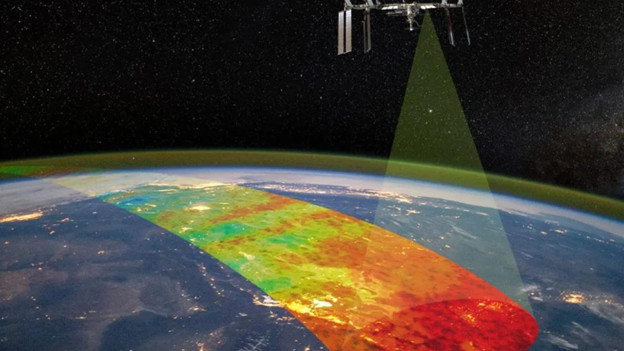- Courses
- GS Full Course 1 Year
- GS Full Course 2 Year
- GS Full Course 3 Year
- GS Full Course Till Selection
- Online Program
- GS Recorded Course
- NCERT (Recorded 500+ Hours)
- Polity Recorded Course
- Geography Recorded Course
- Economy Recorded Course
- AMAC Recorded Course
- Modern India, Post Independence & World History
- Environment Recoded Course
- Governance Recoded Course
- Science & Tech. Recoded Course
- International Relations and Internal Security Recorded Course
- Disaster Management Module Course
- Ethics Recoded Course
- Essay Recoded Course
- Current Affairs Recoded Course
- CSAT
- 5 LAYERED ARJUNA Mentorship
- Public Administration Optional
- ABOUT US
- OUR TOPPERS
- TEST SERIES
- FREE STUDY MATERIAL
- VIDEOS
- CONTACT US
NASA's Atmospheric Waves Experiment
NASA's Atmospheric Waves Experiment
25-11-2023

Why in News?
NASA's Atmospheric Waves Experiment (AWE) is being launched amid increasing disruptions in satellite communication and GPS systems, emphasizing the need for understanding space weather.
- The imminent launch of AWE, which will study the interconnected dynamics of Earth's extreme weather events through Atmospheric Gravity Waves (AGWs), holds significant potential for groundbreaking research.
What are Atmospheric Gravity Waves (AGWs)?
- Gravity Waves: In a stable atmosphere, gravity waves are formed when temperature differences between rising air and the surrounding atmosphere create a force that pushes air back to its initial position.
- Atmospheric Gravity Waves: AGWs are waves that travel within a stable atmospheric layer, thriving in upward-moving air regions, enabling the formation of unique cloud formations.
- AGWs significantly extend into space, significantly influencing the formation of space weather.
- Extreme weather events or disturbances that cause vertical displacement of stable air are the primary sources of these phenomena.
- Thunderstorms, hurricanes, and regional topography are key factors in the formation of AGWs in the lower atmosphere.
What is NASA’s Atmospheric Waves Experiment?
- About: AWE, a NASA experiment under the Heliophysics Explorers Program, aims to investigate the link between lower atmospheric waves and space weather.
- Operational Mechanism: AWE, located on the International Space Station, will observe the vibrant air glows in Earth's atmosphere, specifically at the mesopause, approximately 85-87 km above the Earth's surface.
- AWE will use an Advanced Mesospheric Temperature Mapper (AMTM) to scan the mesopause using imaging radiometers to capture specific wavelengths' brightness.
- Mission Objective: The study aims to comprehend the factors influencing space weather and explore the potential influence of terrestrial weather on it.
- AWE's data will be utilized as inputs for weather models, thereby enhancing weather forecasts.



